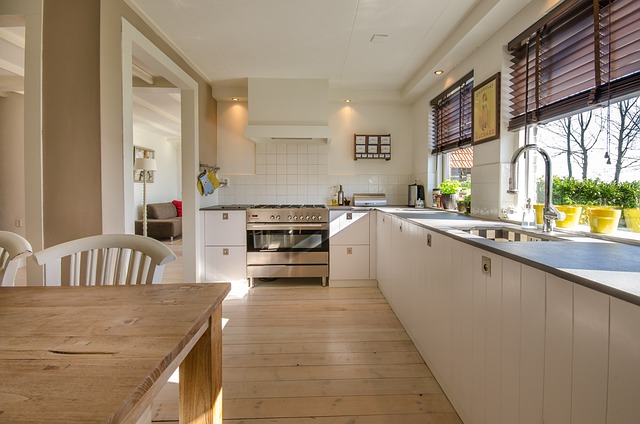Recent advancements in home security now emphasize sustainability, transitioning from traditional intruder deterrence systems to ones that incorporate eco-friendly practices and technologies. These innovations include the integration of solar panels, making security systems more autonomous with less reliance on fossil fuels, thereby reducing their environmental footprint. The new wave of home security is characterized by the use of smart sensors, motion detectors, and devices equipped with energy-efficient microprocessors, which reduce power consumption without compromising effectiveness. Home security companies are increasingly using biodegradable materials and recycled, non-toxic substances in their products, reflecting a commitment to environmental conservation. Highlighted examples include surveillance cameras made from reclaimed ocean plastics, which provide dual benefits of enhancing home protection while mitigating marine pollution. Additionally, security systems are harnessing renewable energy sources, such as solar power, leading to significant reductions in greenhouse gas emissions compared to traditional energy sources. The adoption of smart technology within these systems further enhances their eco-friendly nature by optimizing energy use and operational efficiency, with features like motion-activated LED lighting and smart thermostats that monitor both energy use and potential security threats. These advancements demonstrate a clear trend towards sustainable home security solutions that do not compromise on safety or the environment. Homeowners can now enjoy modern, eco-conscious security systems that protect their homes while supporting global sustainability objectives and promoting energy independence.
Exploring the intersection of safety and sustainability, this article delves into the transformative world of sustainable and eco-friendly home security solutions. As we navigate The Evolution of Home Security Towards Sustainability, we witness a shift from traditional to modern systems that prioritize environmental consciousness without compromising on protection. Eco-Friendly Materials in Modern Home Surveillance Systems highlight innovative components that blend with the home’s natural environment. Renewable Energy-Powered Security Solutions showcase the integration of solar and wind energy, ensuring round-the-clock security operations are green. Smart Home Integration for Enhanced Efficiency and Safety brings together the principles of IoT with eco-awareness to create a harmonious living space. Lastly, Biodegradable and Recyclable Options in Home Security Equipment underscores the commitment to maintaining a planet-friendly approach to safeguarding our homes. Join us as we explore how home security is evolving to protect not just our properties but also the Earth.
- The Evolution of Home Security Towards Sustainability
- Eco-Friendly Materials in Modern Home Surveillance Systems
- Renewable Energy-Powered Security Solutions
- Smart Home Integration for Enhanced Efficiency and Safety
- Biodegradable and Recyclable Options in Home Security Equipment
The Evolution of Home Security Towards Sustainability

In recent years, the concept of home security has undergone a significant transformation, with an increasing emphasis on sustainability. Traditional home security systems, once centered around deterring intruders with alarms and surveillance cameras, are now being augmented with eco-friendly practices that align with broader environmental goals. The integration of renewable energy sources, such as solar panels, into security systems not only enhances their operational autonomy but also reduces the carbon footprint associated with continuous power supply. This evolution reflects a broader societal shift towards sustainable living, where conservation and protection extend beyond personal property to include environmental stewardship.
The shift towards sustainable home security is driven by advancements in technology that allow for more efficient and less resource-intensive solutions. For instance, smart sensors and motion detectors powered by energy-efficient microprocessors minimize power consumption while still providing robust security features. Additionally, the development of biodegradable materials for security components and the use of recycled and non-toxic substances in production further underscore this commitment to sustainability. As a result, modern home security systems are not only formidable protectors of one’s residence but also guardians of the environment, offering peace of mind without compromising the planet’s well-being.
Eco-Friendly Materials in Modern Home Surveillance Systems

In the realm of eco-conscious living, modern home security systems are leveraging sustainable materials to minimize environmental impact while safeguarding residences. These innovative solutions often incorporate recycled plastics and biodegradable composites in their construction, reducing waste and energy consumption. For instance, security cameras may be crafted from reclaimed ocean plastics, offering a dual benefit of enhancing property protection and addressing marine pollution. Similarly, surveillance equipment, including motion sensors and alarm systems, is designed with energy efficiency in mind, utilizing solar power or other renewable sources to operate, thereby significantly cutting down on greenhouse gas emissions compared to traditional power sources. The integration of these eco-friendly materials not only aligns with the global sustainability goals but also ensures that the very mechanisms meant to protect our homes do not compromise the health of our planet.
The use of sustainable materials in home security systems extends beyond the physical components; it also encompasses smart technology integrations that optimize energy usage and operational efficiency. For example, security lighting can be automated to activate only when needed, reducing unnecessary power draw. Additionally, the data centers that store surveillance footage often employ green technologies such as server optimization and cooling solutions that significantly reduce their carbon footprint. By adopting these practices, homeowners are not just fortifying their homes against potential threats but also contributing positively to environmental conservation efforts.
Renewable Energy-Powered Security Solutions

Integrating renewable energy sources into home security systems offers a dual benefit of enhancing safety while promoting sustainability. Solar-powered security cameras, for instance, provide continuous monitoring of residential premises, capturing high-resolution footage day and night without relying on fossil fuels. These self-sustaining cameras are strategically placed to cover blind spots, ensuring protection that is both vigilant and environmentally conscious. Similarly, motion-activated LED lighting systems not only deter intruders with their bright illumination but also minimize energy consumption by only operating when necessary. Such eco-friendly solutions represent a significant advancement in home security technology, aligning with the global push towards green living and energy independence.
In the realm of advanced security measures, wind or solar-powered alarm systems can trigger alerts and notify homeowners and authorities of potential breaches, all while operating off the grid. These sophisticated systems often come equipped with smart technology that learns over time, adapting to the unique patterns of a household, thereby reducing false alarms and increasing the reliability of genuine threat detection. The seamless integration of renewable energy into these security systems means homeowners can enjoy peace of mind without the environmental guilt associated with traditional power sources, making sustainable and eco-friendly home security solutions an increasingly attractive option for the modern, eco-aware household.
Smart Home Integration for Enhanced Efficiency and Safety

In the realm of modern home security, smart integration plays a pivotal role in enhancing both efficiency and safety. These advanced systems are designed to interconnect various components of a home, allowing for real-time monitoring and control. Smart locks, for instance, offer keyless entry and can be operated remotely via smartphones, ensuring that residents can secure their homes with ease and without the need for physical keys. Furthermore, these locks often come equipped with features such as automatic locking mechanisms and can be integrated with home security systems to provide alerts in the event of unauthorized access attempts. Additionally, smart thermostats not only optimize heating and cooling to reduce energy consumption but also contribute to a home’s security by providing another layer of intelligent monitoring. They can detect abnormal patterns that may indicate a security breach and alert homeowners accordingly.
The integration of smart home technology into traditional security measures significantly amplifies the protective capabilities of a residence. Security cameras with motion detection can be networked to provide live feeds to homeowners’ devices, enabling immediate response to potential threats. Smart lighting systems can simulate occupancy by turning lights on and off at scheduled times, deterring intruders. These systems are often upgradable and can learn from the user’s habits, becoming more efficient over time. Moreover, they can be synchronized with smart alarms that sound upon detecting a breach, potentially scaring away intruders before any physical entry occurs. The convergence of these technologies creates a robust defense system for homes, making them not only eco-friendly but also formidably secure.
Biodegradable and Recyclable Options in Home Security Equipment

In the realm of eco-conscious living, the integration of sustainable practices extends to home security systems. Homeowners increasingly opt for biodegradable and recyclable options in their security equipment to minimize environmental impact. Security sensors and alarms made from bioplastic or recycled materials offer functionality without the carbon footprint associated with traditional plastics. These eco-friendly devices are designed to perform just as effectively as their conventional counterparts, yet they are crafted with a commitment to sustainability. When the equipment reaches its end of life, it can be disassembled and its components recycled, ensuring a closed-loop system that benefits both personal safety and the health of the planet.
The shift towards sustainable home security solutions is not only a response to environmental concerns but also a reflection of evolving consumer preferences. Innovations in technology have led to the development of solar-powered surveillance cameras and motion detectors that harness renewable energy sources, reducing reliance on non-renewable energy and lowering electricity consumption for home security needs. Additionally, the lifespan of these devices is often extended through modular design, allowing for individual components to be replaced or upgraded without discarding the entire system. This approach not only conserves resources but also promotes a repair rather than replace culture within the home security industry.
Home security systems have undergone a significant transformation, aligning with the global shift towards sustainability. The integration of eco-friendly materials and renewable energy sources has paved the way for green solutions that safeguard both our homes and the environment. This article has explored the evolution of home security, emphasizing the use of sustainable materials in surveillance systems, the potential of renewable energy to power these solutions, the synergy between smart home technology and eco-consciousness, and the availability of biodegradable and recyclable options for home security equipment. As we continue to prioritize both our safety and the health of our planet, these sustainable and eco-friendly home security solutions represent a prudent step forward, ensuring that the protection of our homes does not come at the expense of the world around us. Homeowners are encouraged to consider these green alternatives as part of their commitment to a more secure and sustainable future.
